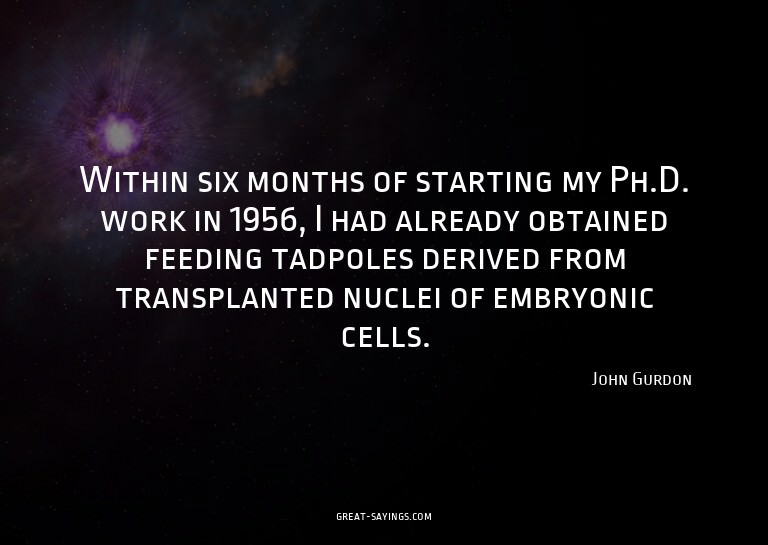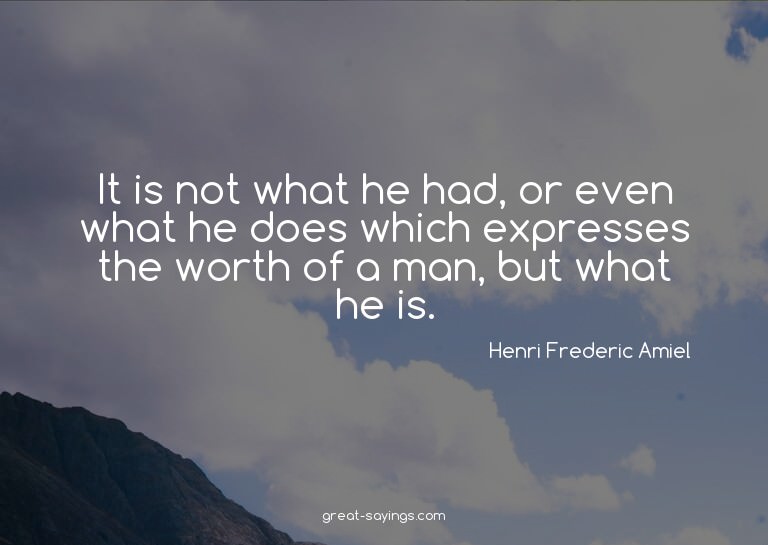Words matter. These are the best John Gurdon Quotes, and they’re great for sharing with your friends.

Within six months of starting my Ph.D. work in 1956, I had already obtained feeding tadpoles derived from transplanted nuclei of embryonic cells.
Once the principle is there, that cells have the same genes, my own personal belief is that we will, in the end, understand everything about how cells actually work.
My first attempts to transplant nuclei in Xenopus were completely unsuccessful, because the Xenopus egg, unlike those of other amphibians, is surrounded by an extremely elastic membrane and jelly layer that make penetration by a micropipette impossible.
The first point to remember is that attempts to clone mice have actually been very unsuccessful for at least a decade. Sheep have been successful. So one asks, ‘Where do humans lie?’ Most people think they are somewhere between the two, but at least there’s a reasonable chance they might be clone-able.
If you explain to a patient what can be done and what might be the downsides, let the patient choose; don’t have ethicists, priests, or doctors say you may or may not have replacement cells.
I get into lab early and leave a bit early, too. So I like to have an hour or two before everybody comes in.
I think that I cannot immediately see the route by which we should really understand memory and the workings of the brain.
If you took some famous religious leader, for example, and said it would be nice to clone them indefinitely so you have a dynasty of leaders, my own guess would be that each time the cloning takes place, they would become more and more defective, presumably mentally defective and subsequently worse.
I remember that, at an early age, I spent many months making a three-masted sailing boat with rigging in a half-walnut shell.
Shinya Yamanaka’s work has involved mice and human cells, and advances the prospect of providing new cells or body parts for patients.
I have this rather amazing report which, roughly speaking, says I was the worst student the biology master had ever taught.
I take the view that anything you can do to relieve suffering or improve human health will usually be widely accepted by the public – that is to say, if cloning actually turned out to be solving some problems and was useful to people, I think it would be accepted.
As a brand new graduate student starting in October 1956, my supervisor Michail Fischberg, a lecturer in the Department of Zoology at Oxford, suggested that I should try to make somatic cell nuclear transplantation work in the South African frog Xenopus laevis.
The importance of the egg’s non-nuclear material – the cytoplasm – in early development is apparent in the consistent relation that is seen to exist between certain regions in the cytoplasm of a fertilized egg and certain kinds or directions of cell differentiation.
I wondered whether the nuclear transfer techniques could be used to introduce purified macro-molecules into an egg, and hence into embryonic cells.
There’s a danger of some of the best people saying, ‘I don’t want a career in science.’
For my part, I have worked all my life with eggs and embryos of frogs. Compared to other small animals, these have figured prominently in the world of literature.
The earliest example known to me of replaced body parts is exemplified by a Mayan skull dating back to 1400 BC. In this skull, false teeth made of stone had been implanted.
It is particularly pleasing to see how purely basic research, originally aimed at testing the genetic identity of different cell types in the body, has turned out to have clear human health prospects.
There is no doubt that I was blessed with a considerable amount of luck.












